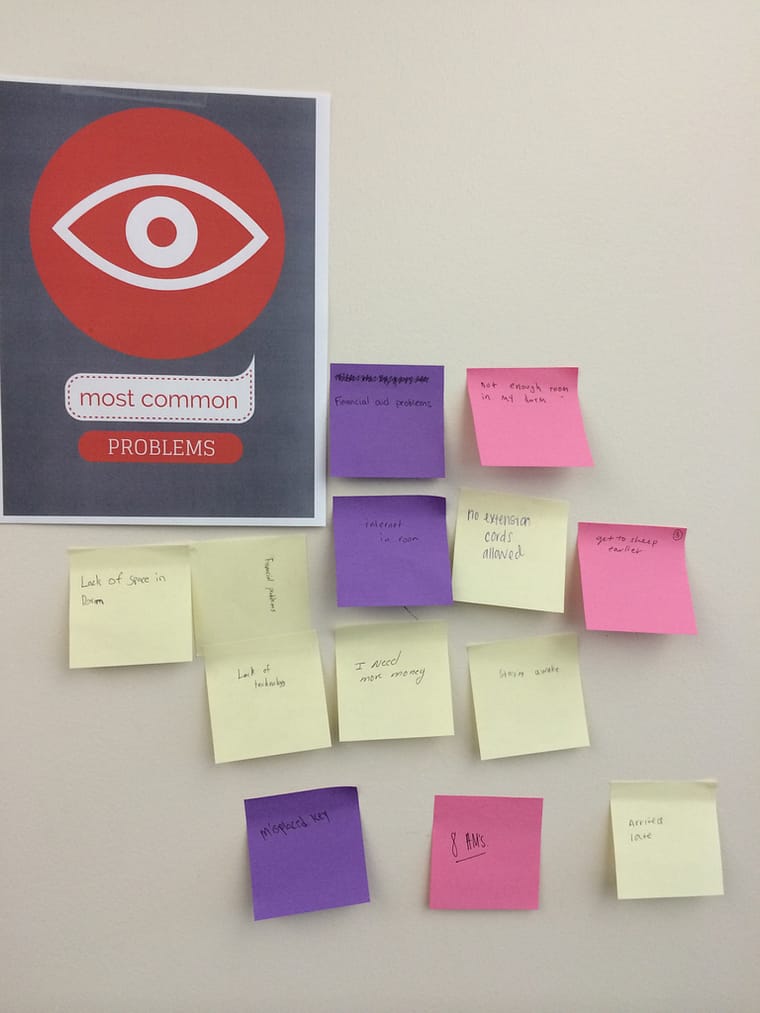This past week was our start to the semester. I was struck, once again, at how little I knew of the students' individual stories that led them to find themselves in my class. As the week ended, though, I celebrated what I was able to glean about them in that short of a time.
A particularly useful tool in connecting with my students was the sticky note.

I'm teaching three sections of Introduction to Business, in addition to one marketing elective. I've taught Introduction to Business over twenty times, previously, just not three times in the same semester.
We started out with an exercise designed to help them get to know each other and start to think about how entrepreneurs come up with ideas.
I shared how many business ideas are the result of attempts to solve problems.
There was recently a story from Wired Magazine about the invention of a gadget that helps solve the problem of doctors not washing their hands thoroughly enough. Another example came from college students looking to reduce date rape incidents through their creation of nail polish that changes color when exposed to date rape drugs.



